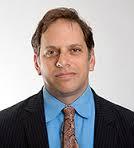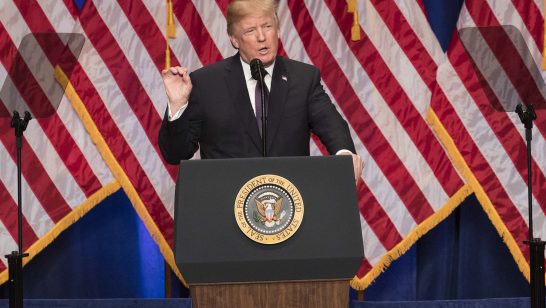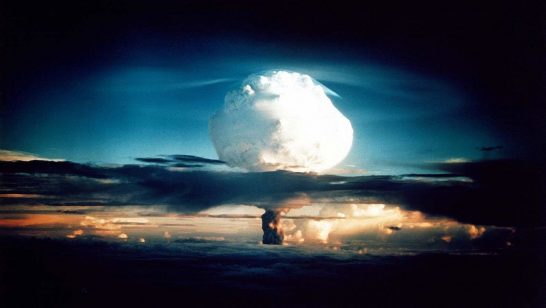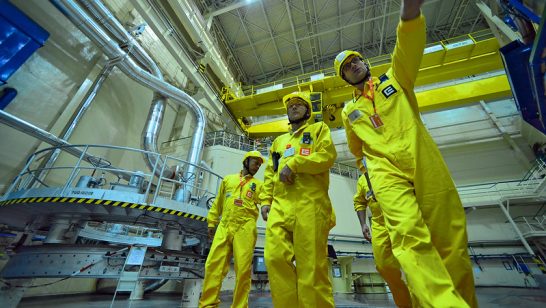
The March 31-April 1 Nuclear Security Summit exhibited all the pomp and fanfare characteristic of such events—the “family photos” of 50 odd world leaders, the motorcades, fancy dinners, and bustling entourages. Yet, the motorcades departed Washington without building a sufficiently strong framework for nuclear security and the end of such meetings raises doubts about whether it will be built in the future.
To be sure, the fourth and final summit made important progress in developing a genuine international regime to prevent nuclear terrorism. In particular, President Obama announced that an important nuclear treaty—an amendment to the Convention on the Physical Protection of Nuclear Material (CPPNM) would soon enter into force, more than a decade after it was opened for signature. The amendment broadens the scope of the underlying international treaty which was previously limited to ensuring sufficient locks and guards for nuclear material while it was international transit. States that sign up to the amendment also pledge that they will provide sufficient guns, guards, and gates while the material is on their own soil.
Other notable achievements came in the form of “gift baskets” or “joint statements.” Such commitments brought together subgroups of summit members who pledged to take faster action on particular issues. For instance, a gift basket signed by 22 countries built on one of the summits’ prime areas of progress: minimization of highly enriched uranium (HEU) used in research reactors and other non-military applications The statement, which calls for the ultimate elimination of HEU from civil uses, committed the signatories to a number of specific goals, including short-term efforts to curb trade in HEU and its use in medical isotope production. It also established several mechanisms for monitoring further progress in the area including voluntary reporting to the International Atomic Energy Agency (IAEA) and a 2018 international conference organized by Norway.
Another important gift basket, championed by France, was aimed at improving the security of radiological materials, non-fissile but radioactive materials used for peaceful applications like cancer treatment. Many experts fear that terrorist might be able to acquire such materials as they are kept in publicly accessible facilities such as hospitals and that terrorists could use them for a “dirty bomb” or other simple weapon. The gift basket, which was signed by 28 countries, sought to encourage states to make an effort to build another important cornerstone of the regime as even the amended CPPNM does not apply to radioactive sources; they are covered only by a 2003 voluntary Code of Conduct. That measure does not tackle many of the crucial issues surrounding such sources such as their disposal. There is considerable concern, for example, that disused but still dangerous source might fall into the wrong hands. The gift basket commits the states to strengthen the international framework on such sources (building on a 2014 initiative in this regard) and cooperate more on disposal. It also includes a new commitment by states to support the development of new technologies that could replace high-risk radioactive sources and promote their development when technically and economically acceptable.
At the previous summit, in 2014 in the Netherlands, 35 countries agreed to an important gift basket that aimed to strengthen international security rules. It committed those countries to establish regulations at least at tough as those recommended by the IAEA in a voluminous set of guidance documents. An important achievement of the 2016 summit was getting China, host to about half of the new nuclear plants under construction, to join the gift basket.
For an earlier summit, this list of achievement might have been sufficient to describe it as a success. However, the failure of the summit to fully or in some cases partly tackle some issues, looms larger given the end of the summit process and the high-level political attention it guaranteed. For instance, the CPPNM’s focus on physical protection of civil nuclear materials means that the physical protection of other materials—radiological and military—has not been sufficiently addressed. Given that military materials far outnumber civil materials and radiological materials are more accessible than others, this is a serious omission. It also does not ensure sufficient international action to tackle other important aspects of nuclear security such as cybersecurity, sabotage, and an organizational culture that gives security concerns a priority. Likewise progress on HEU minimization only makes the failure to halt, let alone reverse, the civil accumulation of the other nuclear bomb material, plutonium, all the more glaring.
The summit attempted to tackle the question of continued international attention to these issues through the formulation of “action plans” for five international institutions—the IAEA, a UN committee, Interpol (the international police organization), the Global Partnership (a group of rich donors on such issues), and the Global Initiative to Combat Nuclear Terrorism. But these plans did little to set a course for future activity, largely restating previous plans.
Other efforts may provide somewhat more hope for future efforts. Twenty-nine summit countries signed a joint statement to continue meeting at least annually as a “Contact Group” to try to push forward on commitments undertaken in the summits. The entry of the CPPNM amendment will require treaty members to have at least one international review conference within five years. The HEU meeting in Norway and discussion of potential “HEU free zones” in regions such as Central and Eastern Europe could offer a path forward in certain geographic areas. The IAEA will hold another of its triennial ministerial conferences on nuclear security this December. Nonetheless, the lack of clear high-level political and institutional leadership in this area threatens to downgrade the issue from one of high politics to a technical concern that receives insufficient attention—until or unless there is a terrorist attack that uses such materials. Some cornerstones for a nuclear security regime have been laid but the next US president and other world leaders will need to finish building the framework for a true nuclear security regime.
The opinions articulated above represent the views of the author(s), and do not necessarily reflect the position of the European Leadership Network or any of its members. The ELN’s aim is to encourage debates that will help develop Europe’s capacity to address the pressing foreign, defence, and security policy challenges of our time.



